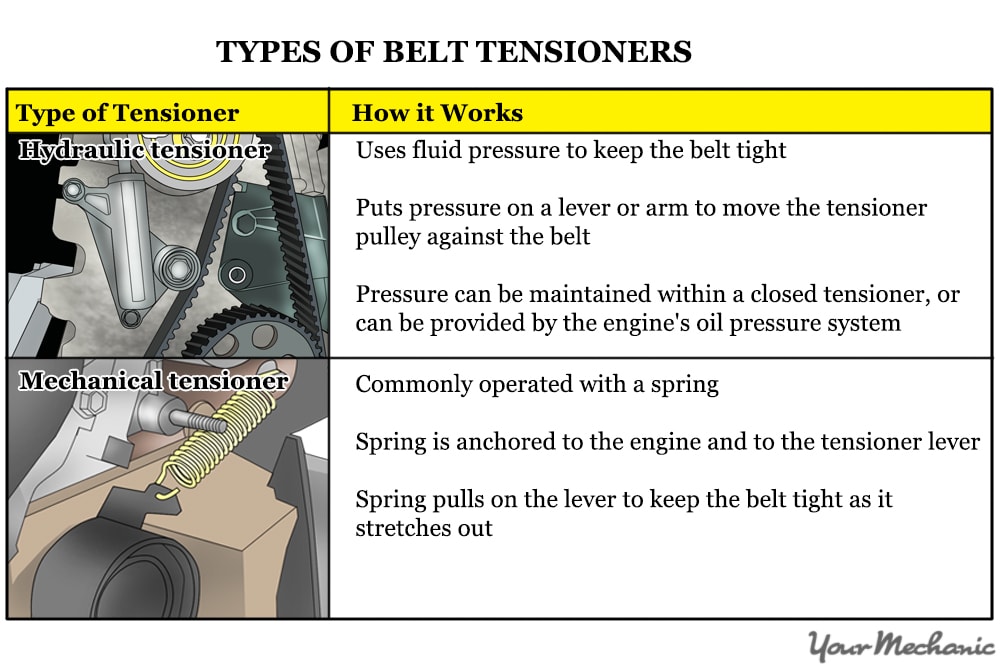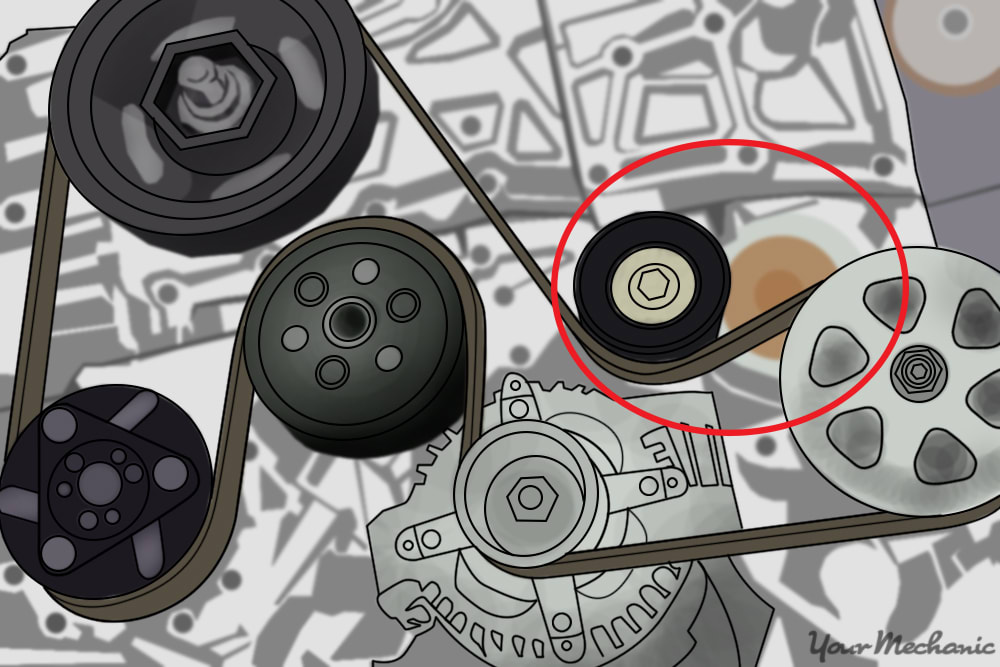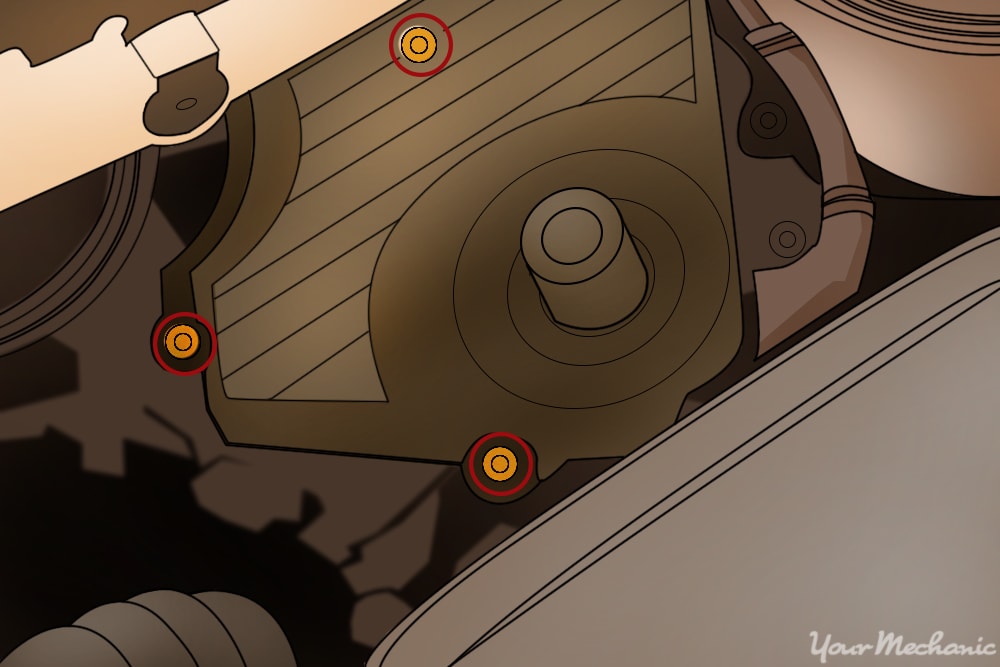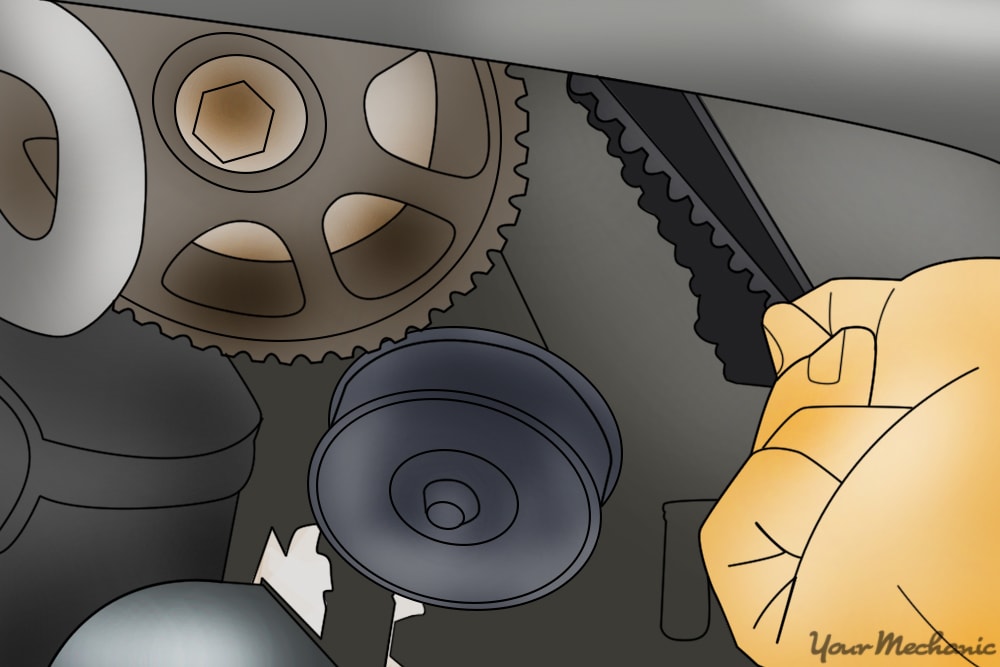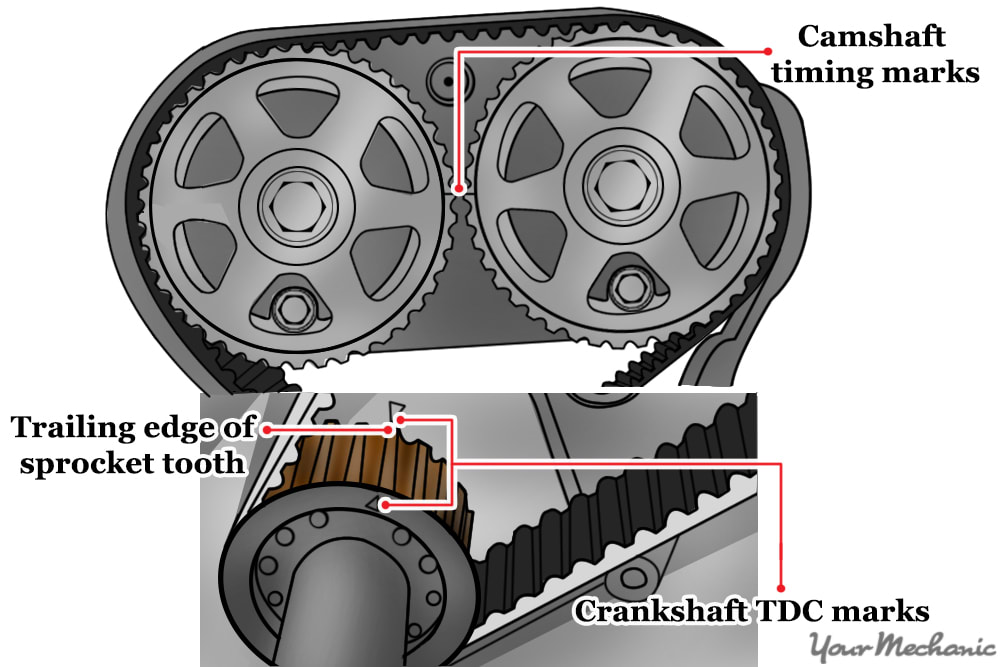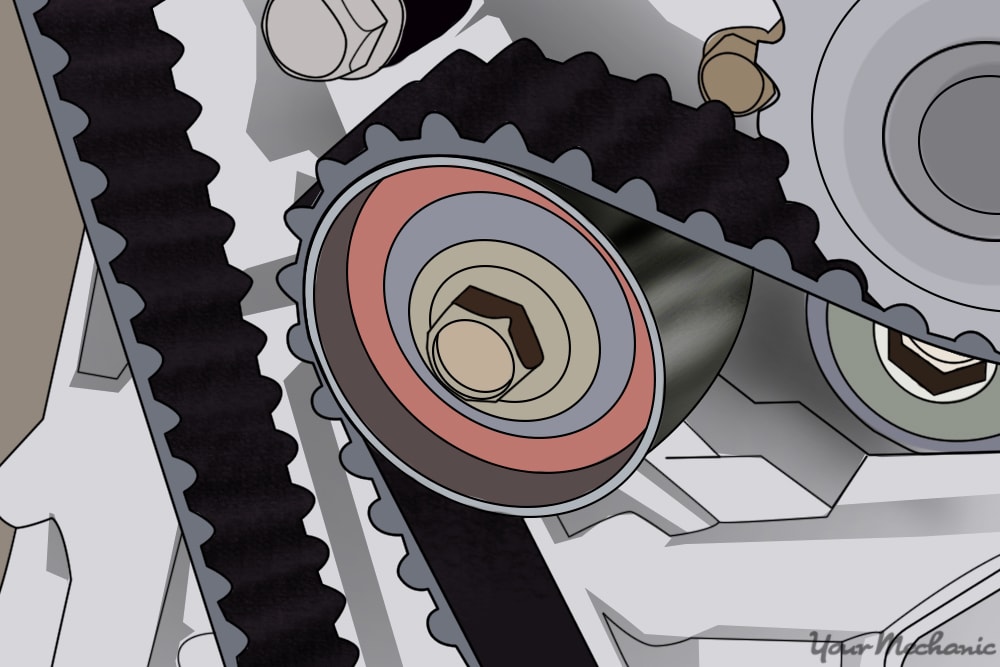

The timing belt is a critical part of the automotive engine; if it breaks, it can cause some serious damage. The belt can break due to a number of reasons, but the most common is age. One other common problem is the belt tensioner. If the tensioner is bad, it can cause the belt to come loose or cause the pulley to seize, making the belt come off. Knowing some of the signs of a bad belt tensioner can help you to prevent serious engine damage due to a timing belt failure.
Part 1 of 6: Purpose of the belt tensioner
The timing belt tensioner is used to do just that - keep tension on the timing belt. The timing belt is a rubber belt that runs over and through a series of pulleys and gears. Over time, due to age and heat, the belt will stretch out. As the belt stretches it can become loose, so the tensioner needs to adjust the belt as needed to keep it tight. There are two main types of belt tensioners.
Part 2 of 6: Tensioner symptoms
When a timing belt tensioner fails, it can result in a number of different symptoms.
Symptom 1: Squealing, rattling, or chirping. When the tensioner or tensioner pulley fails, the loss of tension can cause the belt and pulleys to make high-pitched rattling or chirping noises.
If the pulley bearing completely fails, it can also cause a squealing or even a grinding noise.
Symptom 2: Knocking or slapping. If the tensioner is not keeping the belt tight, the belt can come loose and hit various parts inside of the timing cover, including the cover itself. This can cause a slapping or knocking noise.
Symptom 3: Check engine light illuminated. Though noise is the most common symptom, a loose timing belt can also cause a check engine light.
The check engine light can come on and set a code for a valve timing problem. This is because the valve timing can become out of sync due to the belt not being tight.
Part 3 of 6: What you will need to diagnose the problem
Having all of the necessary materials prior to starting the job will make it go more efficiently. If you are going to replace the tensioner, it is also a good time to replace the timing belt and the related parts.
Materials Needed
- Flashlight
- Ratchet w/metric and standard sockets
- Timing belt tensioner (timing kit if doing a complete job)
- Torque wrench
Part 4 of 6: Isolating the noise
Since there are many other parts located at the front of the engine that can make similar noises to a failing tensioner, it is important to isolate the noise.
You should remove the serpentine belt and start the vehicle and see if the noise remains the same. If the noise goes away then the noise is coming from one of the engine accessories.
Step 1: Park your vehicle and turn off the engine
Step 2: Open the hood and locate the serpentine belt. The belt will be on the front of the engine.
- Tip: Take a picture of the serpentine belt routing with your cell phone. This will make it easier to reinstall the belt if you do not have a diagram of its routing.
Step 3: Locate the serpentine belt tensioner. Move it in the direction required to loosen the belt.
Step 4: Remove the belt. When the belt is loose enough, you will be able to remove it from the pulleys.
Step 5: Start the engine and listen to see if the noise goes away. If the noise remains, it may be the timing belt tensioner.
- Warning: Running the engine with the belt removed will keep the battery from charging and can set a check engine light. Make sure you keep this to a minimum and turn the engine off once you determine whether the noise changes.
If you have determined that the noise is from within the timing belt cover, then proceed to Part 5. If the noise went away, then check all of the engine pulleys to see which one was making the noise. Repair the issue and reinstall the belt if you can, or have a certified mechanic resolve the issue.
Part 5 of 6: Replacing the timing belt tensioner
Step 1: Remove any engine accessories. The AC compressor or power steering pump may interfere with the timing cover.
Step 2: Remove any engine mounts that may interfere. If an engine mount must be removed, you must support the engine with the appropriate equipment.
Step 3: Remove the harmonic balancer. The harmonic balancer may interfere with the timing cover removal.
Step 4: Remove the timing belt cover mounting bolts. Then remove the timing belt cover.
Step 5: Check the tension on the timing belt. Press on the belt between the pulleys. It should not move more than about ¼ inch.
- Tip: If the belt is loose, then the tensioner should be replaced. This is also a good time to check the timing belt. If it shows signs of wear, including cracking or worn-out teeth, then it should be replaced.
Step 6: Crank over the engine by hand. Use the ratchet and socket to turn the engine until the timing marks line up according to manufacturer’s specifications.
- Tip: If your engine requires camshaft or crankshaft alignment tools, install them now.
Step 7: Remove the timing belt tensioner. Remove the tensioner according to manufacturer specifications.
Step 8: Spin the timing belt tensioner pulley and all of the other timing pulleys by hand. Listen for any noises and feel for any roughness or binding.
Replace any pulleys that make noise or do not spin smoothly.
Step 9: Install the new tensioner and any other pulleys. Torque them to specifications.
- Tip: If your new tensioner has a locking pin, you can remove it now.
Step 10: Turn the engine back into position. Using your ratchet and socket on the crank pulley bolt, crank the engine over several revolutions by hand and realign the timing marks.
Step 11: Make sure that all of the timing marks are still aligned. Check the timing marks after you rotate the engine over.
Step 12: Reinstall the timing cover. Put it in place and install its mounting bolts until they are snug.
Step 13: Reinstall the crank pulley. Then reinstall any other engine accessories that were previously removed.
Step 14: Reinstall the serpentine belt. Route it around the appropriate pulleys and move the tensioner as needed.
- Tip: Refer to your picture or diagram for the correct serpentine belt routing.
Step 15: Start the engine and see if the noise is gone.
Part 6 of 6: Recommendations and precautions
When performing a job like this, there are some things to consider.
If you are going to replace the timing belt tensioner, it is a good idea to replace the entire timing belt kit. This typically includes a new timing belt, all of the idler pulleys, the tensioner, and the water pump.
When replacing any part of the timing belt system, it is important to take care when moving the engine. Some engines are interference engines - meaning that damage to the engine can occur due to piston contact with the valves, should the engine be moved out of time.
Replacing the timing belt can be an in-depth service and can result in serious engine damage if not done properly. If you are not comfortable with this, you should get some assistance from a certified mechanic who can check your timing belt tensioner for you.



